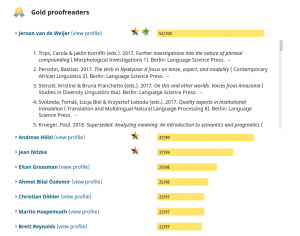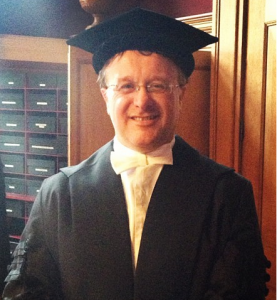- The LangSci Hall of Fame
- Jeroen van de Weijer
Jeroen, you started community proofreading in June 2017 and have participated in 52 published books up to now. You are #1 in the LangSci Hall of Fame.
What were your motivations to sign up as a community proofreader? How did you hear about this possibility?
I think I saw a book in the series and browsed the website–partly out of linguistic interest, and partly as a supporter of open access. I have been editing books and journals for many years, so I like this kind of activity and have gotten a bit of an eye for things that may go wrong in linguistic texts. It’s very nice if you can, once in a while, prevent an author from making a mistake where they forgot a not (or a crucial comma, haha) – it’s nice to make things better, even if it’s only a little.
How do you like the process so far? What have your experiences been?
I like the process. “Crowd-reading” like this is a good idea. Sometimes I read comments by other proofreaders, and note that they do things differently than me. Apparently that’s not a problem, and further streamlining is probably neither necessary nor really warranted (maybe references could still be automatically improved, or American vs British vs Australian English spelling). It’s up to the author, of course, to see what they do with the corrections and comments, and it’s nice to think that a text could still be further improved at some point in the future. Perhaps we can have an evaluation some time.
Could you tell us how you go about a new chapter when you receive it?
I dive right in. I always read the acknowledgements (who doesn’t?), but then I turn to the assigned chapter, start at page 1 and don’t usually stop until I’m at the end. Because of the time difference I often read early in the morning, when I can work for a few hours at a stretch.


